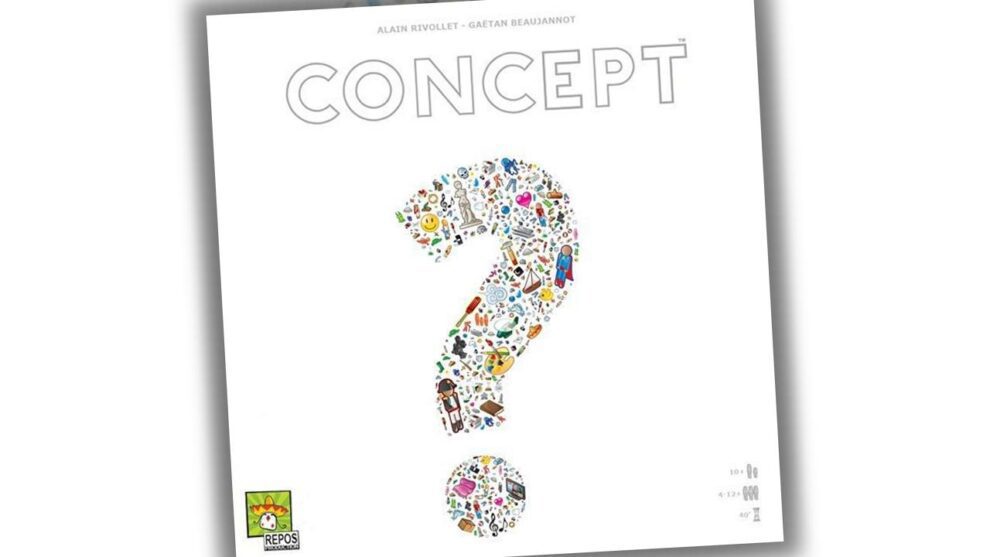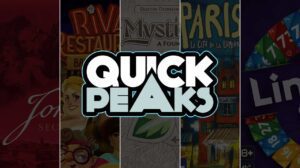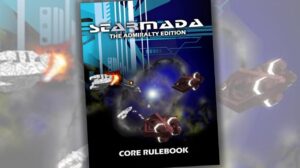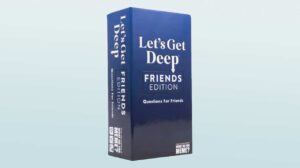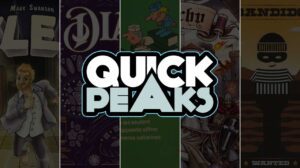Concept is a game that seems simple enough. You draw a card. On this card are nine items to choose from. Select one, then start giving clues until someone figures out what you are describing. You and that person get one point. Next turn. Once you have had 12 turns with a successful guess, the game is over.
The problem enters into the equation when you realize that your clues are limited to the images on the main game board.
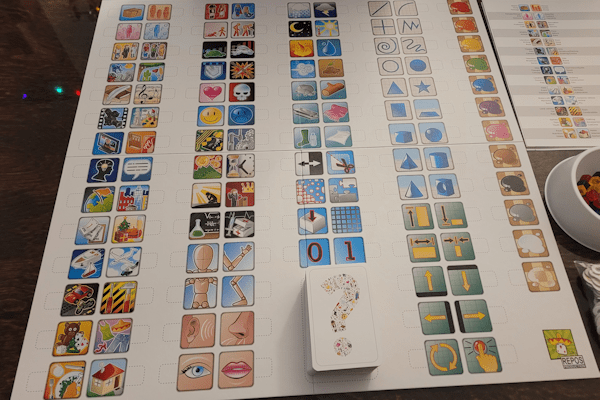
There are 118 images on the board. Each time you put a token on this board, you are telling the players a little bit about the thing you want them to guess. But these images have to do a lot of heavy lifting! The game suggests meanings for each of them, but if you are going to get someone to guess the right thing, both they and you need to expand your thoughts and allow these things to be more than the obvious.
Here is an example of three cards within the game:
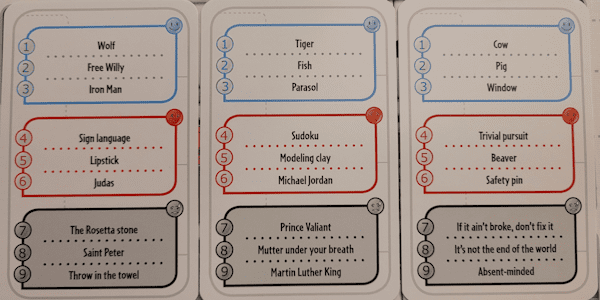
The upper three options are designated as easy; the next as moderate; then the last three are hard.
If you want to give clues to something like “Mutter under your breath” then things like the lips on the beard cannot be just the literal lips. They have to be the mouth and all the functions of the mouth. Fortunately, the game gives you the ability to break your clues into categories.
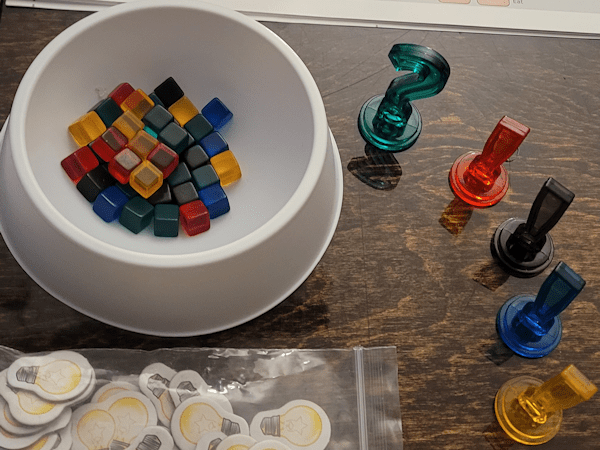
The primary concept is represented with the question mark, and the green cubes. Subsequent ideas within your clues are represented by one of the four exclamation marks and the like-colored cubes.
Even so, it can be tough.
Suppose you had the left-most card above, and you wanted to give clues for Wolf (the top option).You might start like this:

The most you can say when someone guesses is “Yes!”, “No!”, or “Close!” – nothing else.
The leaps of logic a player might make that will put them on to what you are trying to convey are often amazing. Just as amazing are the leaps of logic that put them light years from your point. In the end, it is all about trying to figure out what the people guessing need to know; that means also knowing what pieces of information to hold back to keep them from going astray.
A good time, except…
The game is fun, relatively fast paced (if you have a lively crowd). It can handle larger groups if you want to split into teams rather than playing individually. And the most fun can come from the answers that are given based on misunderstandings of the clues. But the game has some serious flaws:
Easy / Moderate / Hard
The difficulty categories are so subjective as to be meaningless. Often we have found some of the targets to border on impossible; we have seen hard targets that were trivially easy, and everything in between. There is no rhyme or reason to these. Which means it is probably best that there is no point difference if you go for an easy, moderate, or hard target. It is always one point for the clue-giver and one point for the person or team that guessed correctly.
Speaking of Points
This is one of those games where, if someone jumps ahead early in the game, you can find yourself in a game where you have no possibility of winning and yet you have a half-dozen rounds to go. You get to watch yourself lose in slow motion. This game could really use some sort of come-back mechanism.
Familiarity
There are only so many cards in the game. Despite the fact that there are nine options per card, there is no incentive to go for most of the options. This means that if a group plays this game a dozen times or more, you are likely to run into the same cards, and thus the same targets, multiple times.
My wife has managed to get the card with the Sudoku (middle card, above) multiple times. As soon as she puts a clue on the grid, somebody will immediately shout the answer and the round is instantly over.
What to do?
This is a game that needs three things:
- More cards: like I said in my Apples to Apples review, some games need a constant influx of fresh ideas. Concept should (in my very humble opinion, your mileage may vary) receive a pack of 50-100 cards every year. Hell, if they offered a subscription to such things, I would sign up!
- A reason to go bold: they define the targets as easy, moderate, and hard. Let us not deal with the fact that these need to be better defined, and move onto the idea that something needs to be in the game that would incentivize someone to jump past the low-hanging fruit. Trivial Pursuit has six questions and answers on each card, but the one used is determined by the position of the player’s game piece, not a choice by the one reading the card. Perhaps adding a ten-sided die with a result of ‘0’ being the player’s choice? Not sure. But something is needed here.
- A way to catch up: A mechanism, be that the target selected, or something else, needs to be put into place that would allow a player who fell behind to feel like they are still in the game.
Final Thoughts
Concept is a good game. My group has played this enough that the issue of familiarity (above) is a factor. If the game could get a second edition that worked to resolve the three issues listed above, I could raise my rating for this game a full point. Unfortunately, I do not see that happening.


